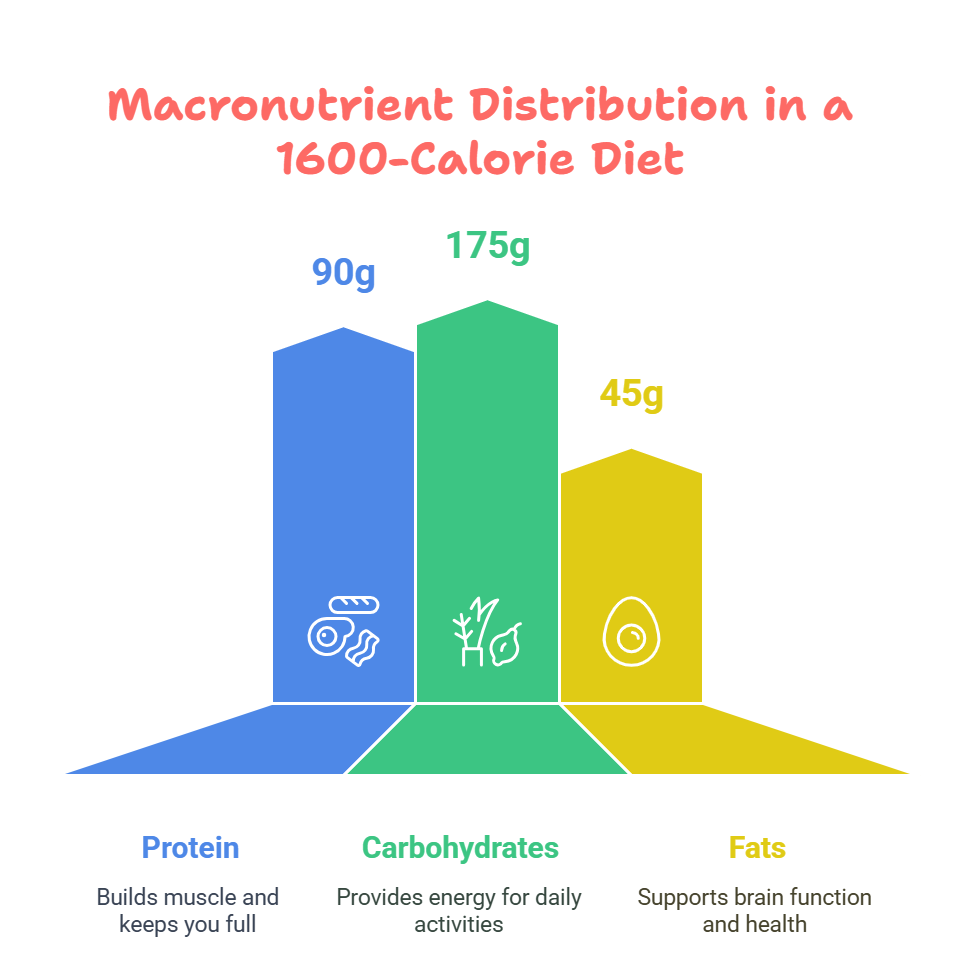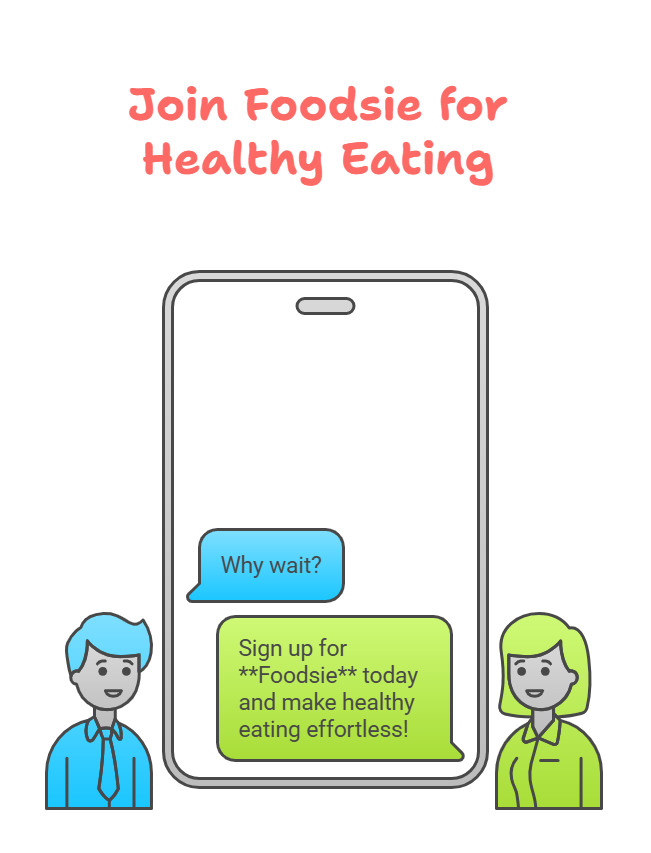
1600 Calorie Meal Plan | Sustainable Fitness Starts with Food
2025-06-04
Managing a 1600-calorie meal plan gets easier with a simple meal planner. It saves you from daily food decisions and helps keep your portions right. If your food has good protein, grains, and healthy fats, your stomach stays full for a long time and you don’t feel tired soon. Having a meal plan makes it simple to manage your weight and you don’t have to waste time thinking about what to eat every day. It also keeps you away from junk food. When you eat proper food daily, your body feels fresh and you stay active.
Introduction:
If you’re looking to lose weight, maintain a healthy lifestyle, or build sustainable eating habits, a 1600-calorie meal plan can be an excellent choice. It provides enough energy to keep you active while ensuring you don’t over consume calories.
But honestly, planning meals is not easy. What should you eat? How do you balance proteins, carbs, and fats? How can you stay consistent without spending hours in the kitchen?
That’s where Foodsie's Meal Planner helps! It simplifies meal planning by giving you personalized meal suggestions based on your preferences, making healthy eating effortless.
Let’s break it down step by step and make healthy eating easier for you.
Understanding a 1600-Calorie Meal Plan
The 1600-calorie meal plan aims to provide balanced nutrition while controlling calorie intake. It works well for:
- Women are aiming for gradual weight loss.
- Men with a less active lifestyle
- Anyone maintaining a healthy weight
- People focused on portion control and mindful eating.
Macronutrient Breakdown

To ensure balanced nutrition, a 1600-calorie diet should include:
Protein: 80–100 g (chicken, fish, eggs, and beans) helps build muscle and keeps you full.
Carbohydrates: 150–200 g (whole grains, fruits, and vegetables) provides energy.
Fats: 40–50 g (avocados, nuts, olive oil) support brain function and overall health.
How Foodsie's Meal Planner Simplifies Healthy Eating
Instead of wasting time deciding what to eat, Foodsie’s Meal Planner helps you:
Get Personalized Meal Plans: Foodsie tailors meals based on your dietary needs.
Save Time & Effort: No more guessing, get pre-planned meals instantly.
Stay on Track with Smart Grocery Lists: Automatically generate a shopping list based on your plan.
Customize Your Plan Anytime: Swap meals, adjust portions, and make it fit your lifestyle.
With Foodsie's Meal Planner, you can focus on enjoying your meals while staying healthy!
Sample 1600-Calorie Meal Plan
Here’s an easy-to-follow 1600-calorie meal plan designed for balanced nutrition.
Breakfast (400 Calories)
Scrambled Eggs with Avocado Toast
- Two scrambled eggs
- 1 slice of whole-grain toast
- ¼ avocado mashed
- ½ cup mixed berries.
Drink: 1 cup (0.24 l) of black coffee or herbal tea.
It is rich in protein, healthy fats, and fiber, which helps to keep you feeling full for longer.
Mid-Morning Snack (150 Calories)
Greek yogurt with nuts.
- ½ cup plain Greek yogurt
- 1 tablespoon almonds or walnuts
It contains a wealth of protein and healthy fats for long-lasting energy.
Lunch (450 Calories)
Grilled Chicken & Quinoa Salad
- • 4 oz. grilled chicken breasts.
- ½ cup cooked quinoa
- 1 cup (0.24 l) spinach or mixed greens
- ½ cup cherry tomatoes
- 1 tablespoon of olive oil and lemon dressing
It's excellent because it balances lean protein, fiber, and essential nutrients.
Afternoon Snack (150 Calories)
Apple Slices with Peanut Butter
- 1 medium apple
- 1 tablespoon of natural peanut butter.
It offers a perfect balance of carbohydrates, protein, and healthy fats.
Dinner (450 Calories)
Salmon and roasted vegetables
- 4 oz. baked salmon.
- 1 cup (0.24 l) roasted broccoli & bell peppers
- ½ cup brown rice
Salmon has Omega-3, which is good for your heart. Whole grains have fiber, which helps with digestion.
Start Your Healthy Journey Today with Foodsie's Meal Planner

Healthy eating is simple with Foodsie’s Meal Planner. You get:
- A structured, easy-to-follow meal plan
- Smart grocery lists for hassle-free shopping
- Customizable options based on your tastes and health goals.
Why wait? Sign up for Foodsie today and make healthy eating effortless!
Start Your Meal Plan Now
Conclusion
Eating on a 1600-calorie plan is not about restriction, it’s about balance. When your meals include the right mix of protein, healthy carbs, and good fats, your body feels satisfied and you have the energy to get through the day. This approach can support weight loss, but it also teaches portion control and makes you more mindful about food choices. Over time, it’s these small, consistent habits choosing whole foods, eating on time, and avoiding unnecessary snacking that build a healthier and more sustainable lifestyle.
Frequently Asked Questions (FAQs)
1. What to eat to complete 1600 calories a day?
A 1600-calorie diet can be easily balanced by including lean proteins like chicken, fish, or beans, whole grains such as oats, rice, or whole-wheat bread, and healthy fats from nuts, seeds, or olive oil. Add colorful vegetables and fresh fruits to cover vitamins and minerals, and spread your meals across breakfast, lunch, dinner, and light snacks so your energy stays balanced throughout the day.
2. Can you lose weight on 1600 calories a day as a female?
Yes, many women can lose weight on 1600 calories a day if it creates a calorie deficit compared to what they usually burn. Weight loss depends on factors like age, height, current weight, and daily activity level, so results vary for each person. For safe and sustainable progress, pairing 1600 calories with regular movement and nutrient-dense foods is generally recommended.
3. How much protein for a 1600 calorie diet?
For a 1600-calorie diet, aiming for 60–100 grams of protein per day is a healthy range. This amount supports muscle repair, keeps you full longer, and helps maintain strength while you lose weight. You can meet this target with foods like eggs, fish, chicken, dairy, lentils, or tofu spread across meals and snacks.